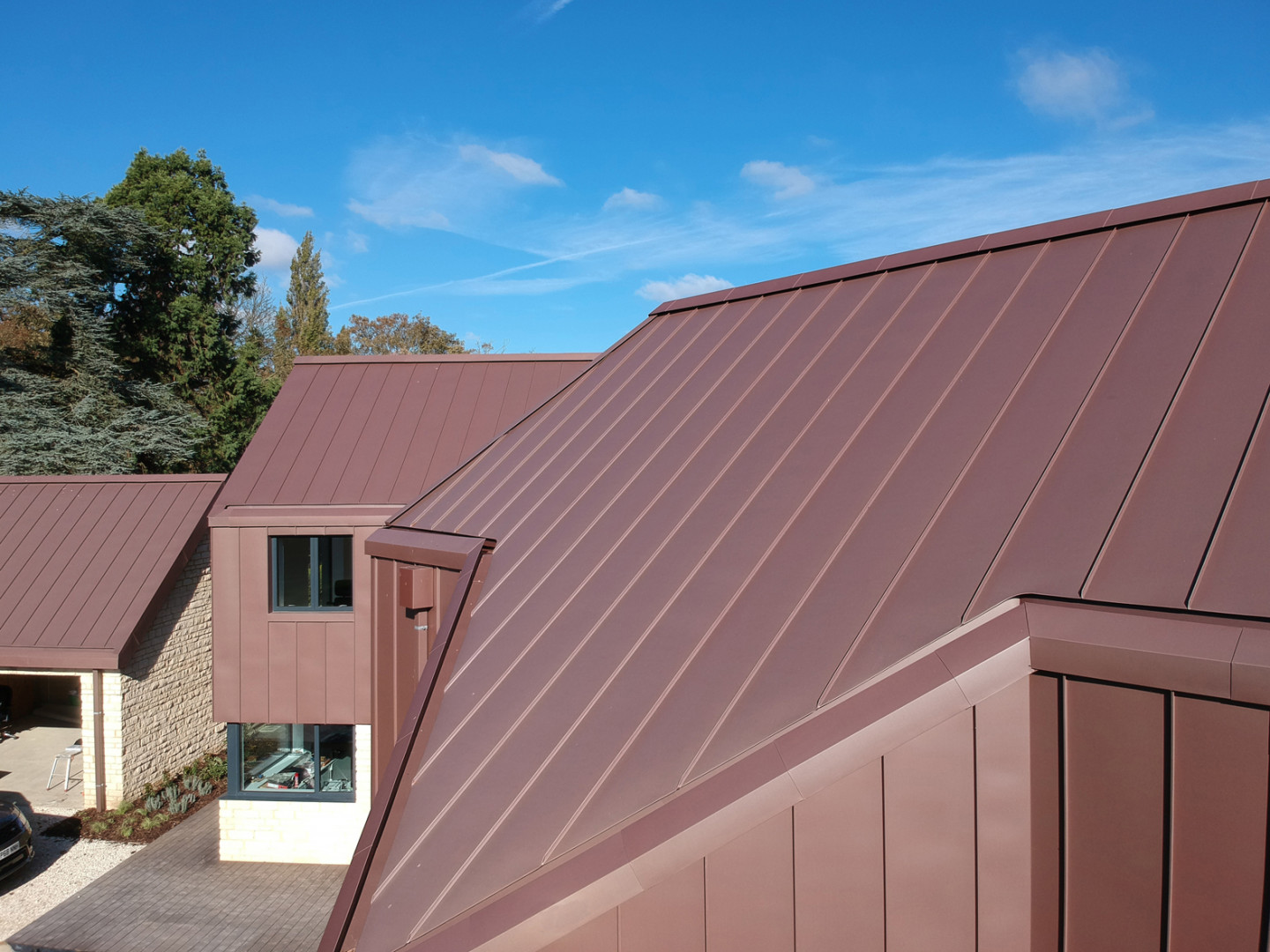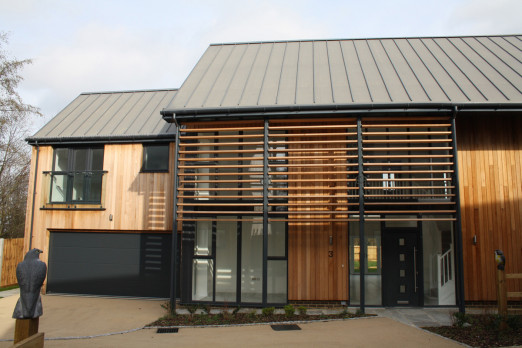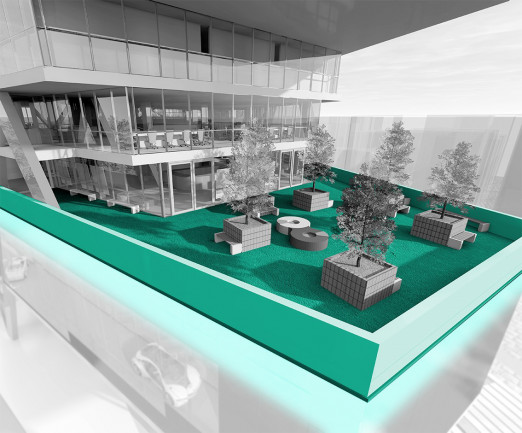Last time we kicked off our top ten roofing design blog posts published in 2019 with numbers ten to six. Here are the top five most read roofing design blog posts of last year – is your favourite at the top?
Cue Fluff Freeman and scroll down to find out more…
5. Flat ventilated zinc ridge detail
This post originated from our (8th in our top ten) case study on the Red Zinc Clad House at Blunham, Bedfordshire, and looked at the flat ventilated zinc ridge detail which was used. Designing a zinc roof which merges into the cladding is a challenge to get right, and in this case the intention was to make the roofing and cladding feel like a single surface which wrapped the whole upper storey and roof in a single surface.
The article looked at ventilated zinc ridge details in general, what made the Blunham one special and what to bear in mind when designing ventilated ridge details in zinc, together with elzinc’s details in 2D, 3D and interactive 3D format for you to use in your projects. Check out the details and links to download them here.
4. Pyrites, Rust and Discolouration: How to Avoid a Rusting Slate Roof
This year we launched our new SIGA Slate website which includes a knowledge base of posts about how to design and install natural slate roofing and other related roofing materials. This post is the first of the knowledge base posts to make our top ten most popular.
One of the common questions we are asked about natural slate is how to avoid the risk of rust in a natural slate roof. In this article we explained what pyrites are, how rusting is caused, what its effects can be. The post looks at how to avoid specifying natural slate which might be subject to this unsightly and often damaging phenomenon. Read about rust on natural slate roofs here.
3. Flat roof fire performance: what architects need to know
Fire is a major topic of interest at the moment, and understandably so. This post was prompted by the news of a fire which broke out on the roof of a restaurant in Manchester, believed to have been started by a patio heater.
The article looks at the external fire ratings of flat roofs, both to protect the inhabitants of the buildings (the Penetration of the fire element) but also the people and property nearby (more associated with the Spread of Flame element). It describes how these influences are dealt with in relation to BS 476 Part 3 and in particular how fire rating tests are carried out, what the fire rating letters mean and what ratings you should be considering for your flat roofs. It includes photography of recent fire rating tests and extracts from Building Regulations 2010 Approved Document B. Take a look here.
2. Low pitch slate roof – below 20 degrees – information and how to specify
This year the SIGA Natural Slate team commissioned the BRE to carry out a series of tests to determine whether it was possible to design and install a natural slate roof at below 20 degrees pitch, so as to determine whether such installations can be guaranteed. The topic of low pitch slate roofs is such a popular one, our article about the results has made it to the top two spot in our top ten this year.
Following the successful test results, we are happy to advise specifiers and contractors that they can choose a SIGA Natural Slate roof as low as 15 degrees (sheltered or moderate exposure) and 17.5 degrees (severe exposure) if the slates are hook fixed with a 150mm lap. If you’re looking for a way to specify a natural slate roof at below 20 degrees, read the post to find out how.
Without further ado, here’s our number one roofing design post of 2019:
1. Ventilated hidden eaves box gutter detail in zinc
Once again a metals blog post makes it to the top of the pile! Our most popular post of 2019 was the one about how to detail a zinc hidden eaves box gutter. Inspired by the Blunham house again, of course.
Hidden box gutters are concealed behind the edge of the roof, rather than attached to the eaves. This has the advantage of making it possible to have a crisp eaves detail, which can either be shallow or sharp, or flush with the edge of the building as with the house in Blunham, where the standing seam zinc cladding appears to travel up the wall and over the roof in one smooth, and apparently seamless surface. The detail used at Blunham had to be ventilated and the illustrations show how effective this gutter detail was in promulgating the ‘wrapover’ effect of the elZinc Rainbow Red and elZinc Rainbow Red Advance roofing and cladding.
The post looks at what to consider when designing a hidden eaves box gutter, including some practical installation advice. Take a look here.
Tell us what you want to read
So we’ve shared our top ten most popular post this year. We love answering architects’ questions about flat roofing, metal roofing and all types of roofing challenges, so why not ask yours? You never know, we might write a blog post about it next year.
Drop us a line using the contact form with your



